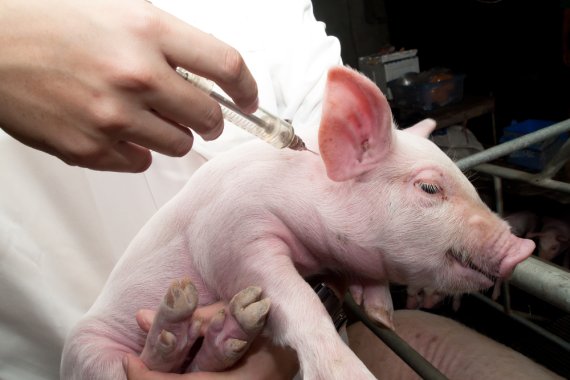Mycoplasma hyopneumoniae is one of the commonest causes of pneumonia in pigs. © Shutterstock
‘Vaccines exist, but the production process is tricky,’ says Kamminga, who received his doctorate from the Systems and Synthetic Biology chair group on Thursday 16 November. ‘One of the reasons for this is that we don’t know which factors cause the disease, and therefore don’t know exactly which components you need to put into the vaccine to provide protection.’ So the vaccine is currently made using whole, dead bacteria. One disadvantage of this is that the bacteria first have to grow on a nutrient base with animal components. That is expensive and it delivers variable results.
In the course of his research, which was financed by pharmaceutical company MSD Animal Health, Kamminga discovered that the bacterium grows faster on other nutrients. ‘Our analysis showed that the bacterium only uses 16 percent of its energy for growth. When we add the substance pyruvate to the nutrient base, the bacteria grow faster and we end up with more than twice as many of them.’ This makes it possible to produce more vaccine in the same time, bringing down the costs of the process.
Kamminga also analysed the genes of 80 species of Mycoplasma bacteria. On the basis of the results he could predict whether a bacterium can infect a pig, a ruminant or a human. He also looked at which genes were active during an infection. ‘If we know which genes are involved and exactly what they do in different animal species, we can focus specifically on these components when developing a new vaccine.’
Kamminga found a total of 62 genes which were more active – or indeed less active – during infection. In some cases, it is already known what their function is. In a follow-up project (MycoSynVac), further research will be done on exactly what the genes do and which are the key ones during infection.
Also read:
‘Develop vaccine against hepatitis E’
Still plenty of MRSA to be found in pork production chain

